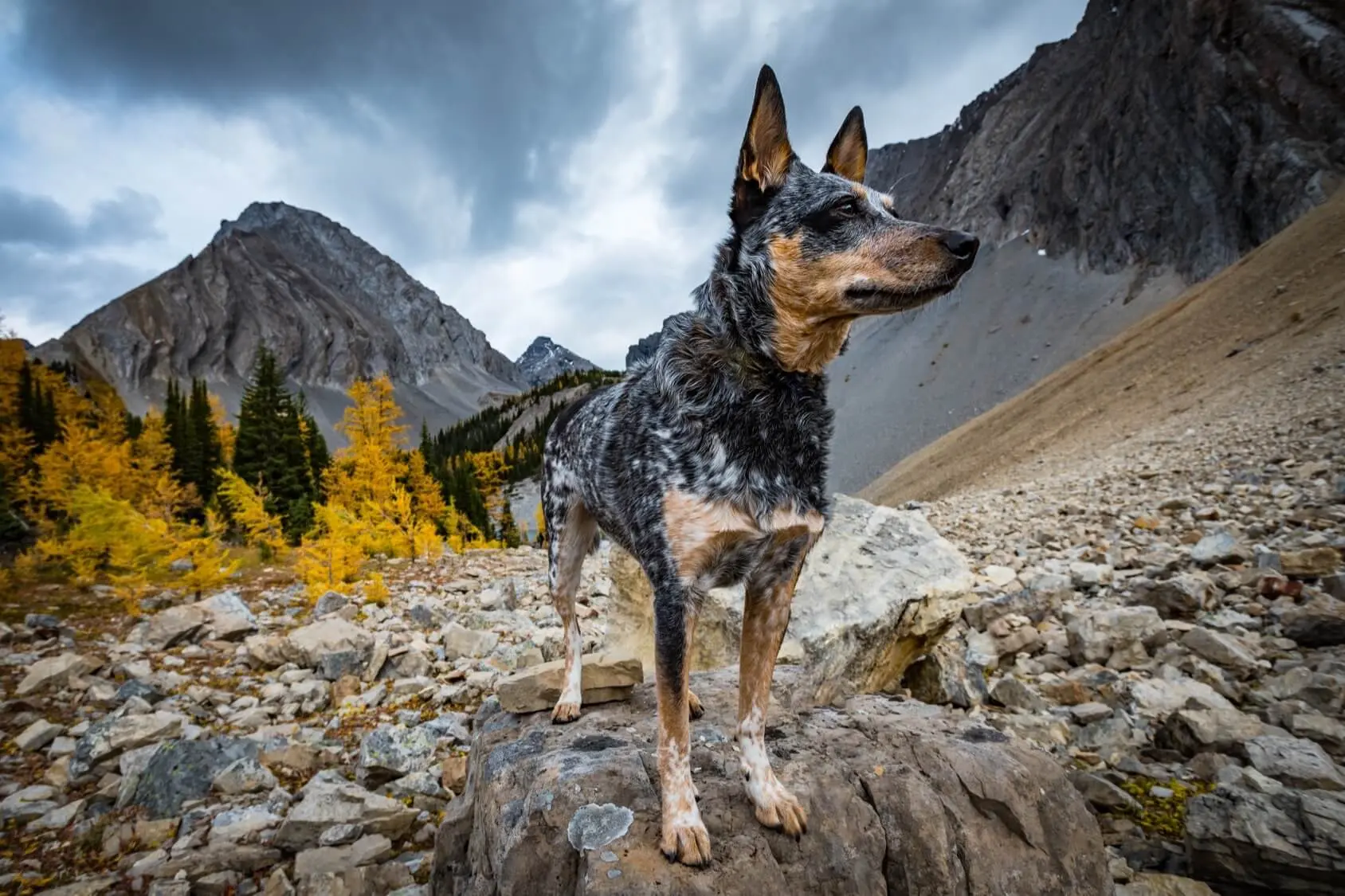
Let me introduce you to a remarkable breed, the Blue Heeler Australian Shepherd Mix, or more affectionately, the Texas Heeler. It is a mix between the Australian Cattle Dog (also known as the Blue Heeler) and the Australian Shepherd. Imagine a dog that combines the intelligence and loyalty of its parent breeds into an irresistible package. This isn’t just any mixed breed; it’s a fusion of the best qualities you could ask for in a canine companion. It’s like stumbling upon a hidden gem in the vast world of dog breeds.
I’m thrilled to take you on a journey into the life of this extraordinary mix. Picture a dog that’s more than just a furry friend – a true partner in life’s adventures. With its stunning looks and steadfast loyalty, this breed has a way of stealing your heart. Whether you’re a solo adventurer or part of a bustling family, this energetic and loving mix is waiting to add a touch of excitement to your life. Trust me, there’s never a dull moment with this delightful blend by your side!
TABLE OF CONTENTS
- Blue Heeler Australian Shepherd Mix Quick Breed Summary
- History of the Australian Shepherd Blue Heeler Mix
- Australian Shepherd Blue Heeler Mix Appearance
- Blue Heeler Australian Shepherd Mix Personality and Temperament
- Caring for an Australian Shepherd Blue Heeler Mix
- The Most Common Health Problems Among Blue Heeler Australian Shepherds
- How to Train an Australian Blue Heeler
- The Costs of Owning a Blue Heeler Australian Shepherd
- FAQs on the Australian Shepherd Blue Heeler Mix
- Is the Blue Heeler Australian Shepherd Mix Right for You?
- More Australian Shepherd and Blue Heeler Mixes
Blue Heeler Australian Shepherd Mix Quick Breed Summary
| Size | 17 to 23 inches |
| Weight | 40 to 65 pounds |
| Lifespan | 12 to 15 years |
| Coat | Short to medium, dense, slightly wavy |
| Color | Blue, red, black white, speckled or mottled |
| Shedding Tendency | Moderate to heavy |
| Temperament | Happy and loyal dog that just loves to work and stay busy |
| Intelligence | Highly intelligent and eager to learn |
| Socialization | Great with people, children, and other dogs |
| Destructive Behavior | Will herd or bark if they do not have exercise or mental stimulation |
| People Skills | They are eager to learn and please |
| Good with Children | Very tolerant and loving toward children |
| Activity Levels | Very high energy dog |
History of the Australian Shepherd Blue Heeler Mix
Diving into the heritage of the Blue Heeler Australian Shepherd Mix reveals a rich tapestry of canine history. These dogs carry the legacy of their forebears, crafted by necessity and shaped by the rugged landscapes they inhabit. Their lineage is a testament to the ingenuity of breeders who sought to combine the best traits for specific tasks. This mix is more than just a blend of two breeds. It’s a living history of pastoral life and the evolution of working dogs.
Origins of the Blue Heeler
The story of the Blue Heeler starts in the harsh yet beautiful Australian outback. Here, settlers faced the challenge of managing cattle over vast territories. The solution came through breeding, leading to the creation of the Blue Heeler. It is one of the color variations of the Australian Cattle Dog, with the other one being the Red Heeler. This breed combines the resilience of native Dingoes with the herding instincts of dogs like the Collie and Dalmatian. The result was a robust, intelligent dog that could navigate the demanding Australian terrain. The dog is indispensable to cattle ranchers.
The Blue Heeler’s development was marked by a focus on functionality over form. Breeders are selected for traits like agility, intelligence, and a strong work ethic. These dogs were not just workers. They became integral parts of the families and communities they served. Their loyalty and protective nature made them more than mere cattle dogs.
Australian Shepherd Beginnings
The journey of the Australian Shepherd began not in Australia, but in the American West. This breed emerged as a versatile herder, adept at managing flocks in varied and challenging environments. While its name suggests Australian origins, the breed was refined in the United States. It gained popularity among ranchers and cowboys for its remarkable intelligence and adaptability.
The Aussie’s lineage is a mosaic of influences, including dogs brought by Basque shepherds from Europe via Australia. These dogs were bred with local breeds, enhancing their herding ability and resilience. The Australian Shepherd became renowned for its ability to learn commands quickly and perform complex tasks. This made it an invaluable asset in the sprawling ranches of the American West.
The Birth of a Mix
The inception of the Blue Heeler Australian Shepherd mix was a natural progression in the world of herding and working dogs. Breeders saw an opportunity to merge the Heeler’s tenacity and the Aussie’s smart, problem-solving skills. This mix was not just about creating a competent herder; it was about crafting a dog that could excel in a variety of roles, from service and therapy work to loyal family companionship.
This hybrid benefits from the genetic diversity of its parent breeds, leading to a robust and adaptable dog. The mix has inherited the Heeler’s endurance and the Aussie’s keen intellect, making it a standout in dog sports and as a working partner. Its rich heritage imbues it with a unique blend of traits, making the Blue Heeler Australian Shepherd mix a testament to the enduring bond between humans and their canine companions.
Australian Shepherd Blue Heeler Mix Appearance
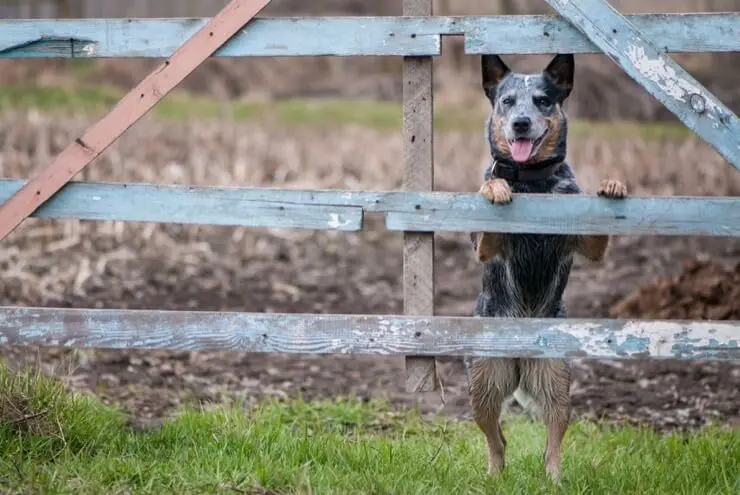
Exploring the physical appearance of the Blue Heeler Australian Shepherd Mix is like admiring a masterpiece. Each dog is a unique blend of its parent breeds, boasting a variety of striking features. From their athletic build to their expressive eyes, these dogs are a sight to behold.
Athletic Build
Standing beside an Australian Shepherd Blue Heeler mix, you can’t help but notice its athletic silhouette. These dogs typically stand tall, with heights ranging from 17 to 23 inches at the shoulder. They carry a weight that complements their size, usually between 40 to 65 pounds. These dogs embody a perfect balance of muscle and agility. Their stature speaks to their heritage, built for days of work on vast ranches or farms.
Their bodies are compact yet powerful, a testament to their working dog lineage. It’s this robust build that gives them the stamina for long days of activity. Whether they’re herding, playing, or joining you for a run, their physical prowess is always on display.
Coat and Colors
One glance at their coat and you’re drawn into a world of color and texture. The mix inherits the dense, weather-resistant coats of its parents. Therefore, it’s ideal for both the rugged Australian outback and the diverse climates of the American West. Their fur can range from short to medium length. In addition, they have a slightly wavy texture that adds to their charm.
The color palette of these dogs is truly mesmerizing. You’ll find them in a mix of blue, red, black, and white, often speckled or mottled in a way that’s reminiscent of the Blue Heeler’s distinctive coat. Some may inherit the Australian Shepherd’s merle pattern. Such adds swirls of color that make each dog a one-of-a-kind masterpiece. Their expressive faces have masks or patches, adding to their striking appearance.
Expressive Features
It’s in their eyes that you find the window to their soul. The Blue Heeler Australian Shepherd mix often inherits the captivating gaze of its parents. Their eyes can be brown, blue, or even one of each.
Their ears, too, tell a story of their heritage, usually pricked or semi-pricked, always alert to the world around them. This attentive nature is a hallmark of their breed, always ready to engage or work. From their sturdy legs to their bushy tails, every feature of the Blue Heeler Australian Shepherd mix contributes to their overall allure.
Blue Heeler Australian Shepherd Mix Personality and Temperament
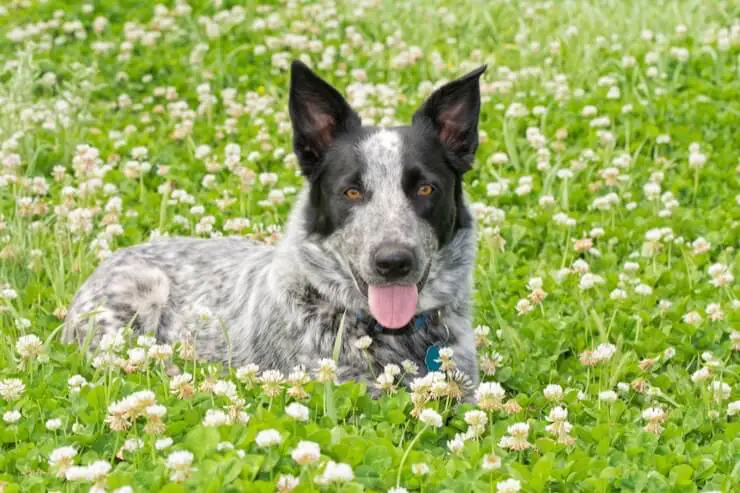
Stepping into the world of a Blue Heeler Australian Shepherd Mix is like opening a door to endless energy and joy. Let me walk you through the vibrant personality that defines these incredible dogs, making every day an adventure.
Energetic and Playful
First things first, these dogs are a bundle of energy! They inherit a love for activity from both parent breeds. Whether it’s a game of fetch, a hike, or agility training, they’re always up for an adventure. Their playful nature is contagious, making dull moments a thing of the past. You’ll find their enthusiasm for life brings a new level of excitement to your daily routine.
Their zest for activity isn’t just about fun. It’s a crucial part of their well-being. Regular exercise keeps them happy and healthy. So, if you’re someone who loves the outdoors, you’ve found your perfect match!
Intelligent and Trainable
Now, let’s talk smarts. These dogs are whip-smart, thanks to their herding heritage. Training them is not just easy; it’s a joy. They pick up on commands quickly and are always eager to learn new tricks. Their intelligence isn’t just about obedience. It’s about forming a deep, understanding bond with you.
This intelligence comes with a need for mental stimulation. Puzzle toys, advanced training, and interactive play are key. Engage their minds, and you’ll have a well-behaved, content companion.
Loyal and Protective
At the heart of the Blue Heeler Australian Shepherd mix is unwavering loyalty. They form deep bonds with their families, making them excellent companions. Their protective nature means they’re always looking out for you. It’s comforting to know you have such a devoted friend by your side.
However, this protective streak requires careful socialization. Introduce them to various people, places, and situations early on. This helps them become well-adjusted adults who can distinguish between normal and threatening scenarios.
Adaptable and Sociable
Despite their strong work ethic, these dogs are surprisingly adaptable. They can thrive in various living situations, from spacious farms to cozy apartments. However, make sure to meet their needs. Their sociable nature makes them great family pets. They get along with children and other pets, especially when raised together.
Remember, their adaptability doesn’t mean they can be left alone for long periods. They thrive on companionship and interaction.
Caring for an Australian Shepherd Blue Heeler Mix
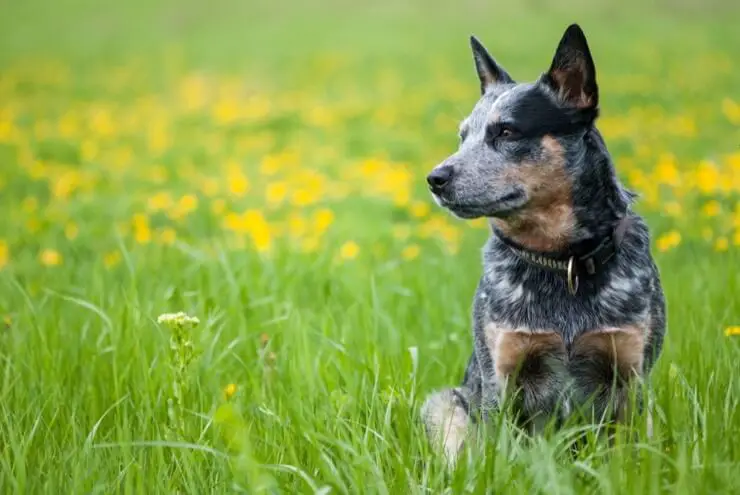
Raising a Blue Heeler Australian Shepherd Mix is a journey filled with activity and companionship. Surprisingly, they’re not high-maintenance. Let’s dive into what keeps these spirited dogs thriving.
Exercise: A Thriving Energy
The vitality of a Texas Heeler knows no bounds, and exercise is the key to their happiness. Unlike many breeds, they don’t just enjoy physical activity. Rather, they need it to channel their abundant energy positively. Their herding instincts mean they’re naturally driven to move and work. Without ample exercise, they might resort to herding people or becoming escape artists searching for adventure.
To meet their needs, a mix of physical and mental stimulation is essential. A spacious yard where they can run freely is ideal, catering to their independent nature. But remember, their curiosity and herding instincts make a leash necessary during walks to prevent unexpected chases. Activities like running, tug of war, and chasing after animal-like toys not only keep them fit but also deeply satisfy their instinctual drives.
- Number of Walks Per Day: 2-3
- Total Exercise Needed Per Day: 90+ minutes.
Grooming: Low Fuss, High Shed
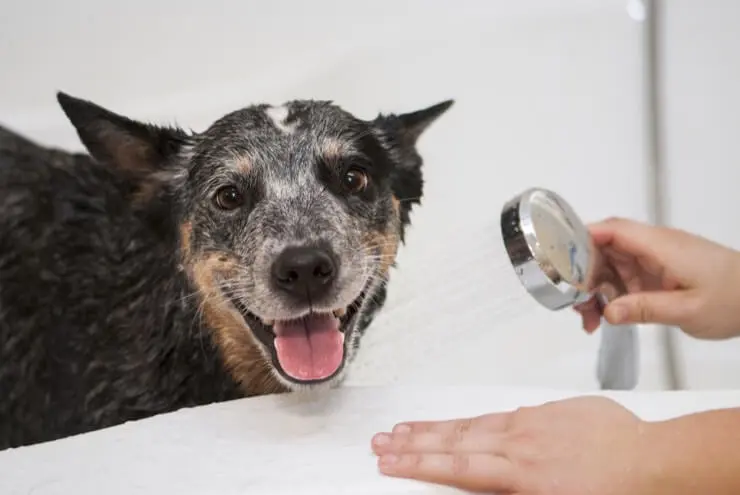
Grooming a Blue Heeler Australian Shepherd Mix is refreshingly straightforward. Their shorter coats might suggest minimal shedding, but the reality is a bit different. Thanks to their double-layered coats, designed to withstand all weather conditions, they shed throughout the year. However, a simple weekly brushing session can significantly reduce the amount of hair around your home, making grooming more about maintenance than aesthetics.
When it comes to professional grooming, these dogs are pretty low-key. Apart from regular nail trims, there’s little need for frequent trips to the groomer. This ease of care makes them an appealing choice for those who appreciate the beauty of simplicity in their companions.
Nutrition: Fueling Their Fire
Feeding a Blue Heeler Australian Shepherd Mix is all about sustaining their high-octane lifestyle. These dogs thrive on three cups of high-quality dog food daily. Divide it into two or three meals to maintain their energy levels. Whether you opt for food formulated for medium or large breeds, the key is ensuring it meets their nutritional needs.
Protein is the cornerstone of their diet, necessary to support their muscular build and constant activity. A diet with at least 22% protein content helps fuel their energetic lifestyle, keeping them ready for whatever adventure comes next. Always scrutinize food labels to ensure your furry friend is getting the right balance of nutrients to stay in peak condition.
- Recommended Calories Per Day: 875 to 1,750
- Cups of Kibble Per Day: ~3
Preparing Your Home: Their Safe Playground
Welcoming a Blue Heeler Australian Shepherd Mix into your home means creating a space that’s safe and stimulating. They’re adaptable and can thrive in various environments, but they do best with room to roam and explore. Ensuring your yard is securely fenced gives them the freedom to play while keeping them safe. Inside, having a dedicated space for them, complete with a comfy bed and their favorite toys, makes them feel at home.
Safety-proofing your home is also crucial to prevent any mischief or accidents. Keeping small objects and potential hazards out of reach ensures your energetic companion can enjoy their indoor time without any risks. Creating this haven for them strengthens your bond, making your home a true haven of happiness and health for your beloved mix.
The Most Common Health Problems Among Blue Heeler Australian Shepherds
Ensuring the well-being of a Blue Heeler Australian Shepherd Mix involves being vigilant about certain health conditions that can affect this otherwise hardy breed. By understanding these issues and how to manage or prevent them, you can help your furry friend lead a long and happy life.
Hip Dysplasia
Hip Dysplasia is a hereditary condition common in medium to large breeds, including the Blue Heeler Australian Shepherd Mix. It occurs when the ball and socket of the hip joint don’t fit or develop properly, leading to pain, arthritis, and mobility issues. This condition can be exacerbated by rapid weight gain or overly strenuous exercise in growing puppies.
- Weight Management: Keeping your dog at a healthy weight is crucial to minimize the stress on their joints.
- Appropriate Exercise: Engage in regular, gentle exercises like swimming or walking, which don’t overstrain the hips.
- Nutritional Support: A diet rich in omega-3 fatty acids can help manage inflammation, while supplements like glucosamine and chondroitin support joint health.
- Regular Veterinary Screenings: Early detection through routine vet exams can lead to better management of this condition.
Progressive Retinal Atrophy (PRA)
Progressive Retinal Atrophy is a group of genetic diseases seen in dogs that leads to retina degeneration, resulting in gradual vision loss and blindness. While there’s no cure, early detection can help you prepare and make life easier for your affected dog.
- Early and Regular Eye Exams: Annual check-ups with a veterinary ophthalmologist can help catch PRA early.
- Genetic Testing: Before breeding, test dogs for the PRA gene to prevent passing it to offspring.
- Home Adaptation: Keep your home layout consistent to help your dog navigate as their vision declines.
- Safety Measures: Use leashes and fenced areas to protect a dog with compromised vision from accidents.
Deafness
Deafness in dogs can be either congenital (present at birth) or acquired due to age, infection, or injury. Blue Heeler Australian Shepherd Mixes may be predisposed to congenital deafness. Such is common in those with a lot of white in their coat. This has a link to genes that may cause hearing loss.
- Hearing Tests: BAER (Brainstem Auditory Evoked Response) testing can diagnose deafness in dogs.
- Alternative Communication: Train your dog using hand signals or visual cues to communicate effectively.
- Protecting a Deaf Dog: Ensure a deaf dog’s safety by keeping them on a leash outside and using a fenced yard.
- Regular Health Check-ups: Include ear exams in your dog’s regular vet visits to catch and treat any potential causes of acquired deafness early.
How to Train an Australian Blue Heeler
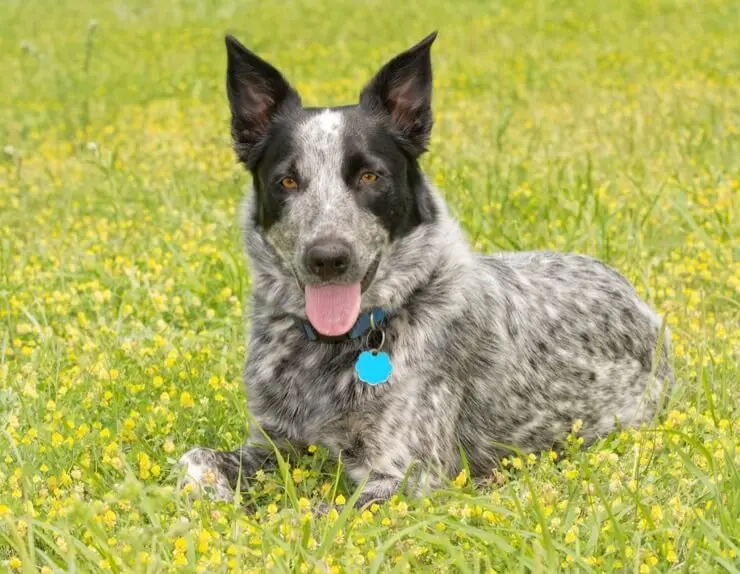
Embarking on the training journey with a Blue Heeler Australian Shepherd Mix is an exhilarating experience. Dog training presents opportunities for growth and deeper connection. These dogs, with their sharp minds and boundless energy, are ready to learn from the get-go.
Start Early
The key? Start training early. These pups are eager learners from a young age. Introducing basic commands like ‘sit’, ‘stay’, and ‘come’ sets a strong foundation. Early training not only teaches them obedience but also helps in building a deep bond between us.
Consistency is Crucial
Consistency is my mantra. Regular, short training sessions work wonders. I make sure to practice commands daily. This repetition reinforces their learning and keeps their minds sharp. It’s amazing how quickly they pick up new skills with consistent effort.
Positive Reinforcement
I always lean on positive reinforcement. Rewards like treats or praise make training a joyous activity for them. This approach not only speeds up their learning but also strengthens our connection. Their wagging tails tell me they love this method too.
Socialization
Socialization is a game-changer. Introducing them to different people, dogs, and environments early on broadens their horizons. It helps them become well-adjusted adults, ready to face the world with confidence. This exposure is key in shaping their friendly and adaptable nature.
Patience Pays Off
Patience is my secret weapon. Training doesn’t happen overnight. It requires time and patience. There are days when progress seems slow, but I’ve learned to celebrate the small victories. Every step forward is a triumph in our training journey.
Keep It Fun
I always keep training fun. Mixing in games and play keeps their interest peaked. It turns learning into an enjoyable experience for both of us. Their enthusiasm for play translates into a keenness to learn, making each session something we both look forward to.
The Costs of Owning a Blue Heeler Australian Shepherd
Owning this dog requires a financial commitment. It does not stop after the initial purchase or adoption. Instead, he expenses could pile up, especially when medical emergencies arise.
Initial Costs
Your initial setup for welcoming a Blue Heeler Australian Shepherd Mix includes:
- Purchase/Adoption Fee: $300 – $800, depending on the breeder or rescue organization.
- Essentials Kit: Around $200 – $500 for items like a high-quality leash, collar, comfortable bed, water and food bowls, and initial toys.
- First Veterinary Visit: Approximately $100 – $300, which typically includes vaccinations, a wellness exam, and possibly microchipping.
Ongoing Veterinary Care
Routine and unforeseen medical expenses form a significant part of the ongoing costs:
- Annual Check-ups: $200 – $300, including vaccines and routine health monitoring.
- Preventative Medications: Around $100 – $300 yearly for flea, tick, and heartworm prevention.
- Emergency Fund: It’s wise to have $1,000 – $2,000 set aside, or consider pet insurance which can range from $20 to $50 per month.
Nutrition
Feeding a high-energy breed like the Blue Heeler Australian Shepherd Mix involves:
- Quality Dog Food: $40 – $80 per month, depending on the brand and your dog’s size and dietary needs.
- Treats: $10 – $30 per month, useful for training and occasional rewards.
Training and Socialization
Proper training and socialization are crucial investments in your dog’s well-being:
- Training Classes: Basic obedience classes can range from $50 to $200 for a series of sessions.
- Socialization Opportunities: Costs can vary; however, many dog parks are free, but doggy daycare or playgroups might run $15 – $50 per session.
Grooming
While they have relatively low grooming needs, there are still some costs:
- Basic Supplies: A one-time purchase of $50 – $100 for at-home grooming tools.
- Professional Services: Nail trims and occasional professional grooming can total $30 – $100 per visit, depending on services.
Exercise and Entertainment
Keeping your dog mentally and physically stimulated is key:
- Toys and Equipment: $50 – $200 annually, depending on durability and variety.
- Agility or Advanced Training Classes: Optional and can vary widely, but could be $100 – $300 for a series of sessions.
FAQs on the Australian Shepherd Blue Heeler Mix
How long does a Blue Heeler Australian Shepherd Mix live?
A Blue Heeler Australian Shepherd Mix typically enjoys a lifespan of 12 to 15 years. With proper care, regular veterinary check-ups, and a healthy lifestyle, these dogs can be your loyal companions for many wonderful years.
Do Blue Heeler Australian Shepherds bark a lot?
Blue Heeler Australian Shepherd Mixes have moderate barking tendencies. They might bark to alert you of something unusual or during play, but with proper training and mental stimulation, excessive barking can be managed effectively.
Is the Blue Heeler Australian Shepherd Mix destructive?
Without adequate exercise and mental stimulation, a Blue Heeler Australian Shepherd Mix might exhibit destructive behaviors. Providing sufficient physical activity, interactive toys, and attention can prevent these tendencies and keep them content.
Can Blue Heeler Australian Shepherds live with other pets?
Yes, Blue Heeler Australian Shepherd Mixes can coexist peacefully with other pets, especially if raised together. Proper socialization and introductions are key to fostering harmonious relationships with other animals in the household.
Are Blue Heeler Australian Shepherds good with children?
Blue Heeler Australian Shepherd Mixes can be great companions for children, offering loyalty and playfulness. Supervision and teaching children how to interact with dogs respectfully ensure positive experiences for both the child and the dog.
Are Blue Heeler Australian Shepherds destructive?
If left without enough physical and mental stimulation, Blue Heeler Australian Shepherd Mixes may become destructive as a way to expend their energy. Regular exercise, engaging toys, and consistent training can help mitigate unwanted behaviors.
Do Blue Heeler Australian Shepherds require a lot of physical activity?
Absolutely, Blue Heeler Australian Shepherd Mixes are high-energy dogs that thrive on physical activity. They require at least 90 minutes of exercise daily to maintain their health and happiness, making them perfect for active individuals or families.
Is the Blue Heeler Australian Shepherd Mix Right for You?
Choosing a Blue Heeler Australian Shepherd Mix as your next canine companion is a decision that warrants thoughtful consideration of your current lifestyle and pet ownership experience. This vibrant and energetic breed brings a unique blend of intelligence, loyalty, and activity to any home, but also requires a certain level of commitment and understanding from its owners.
Blue Heeler Australian Shepherd Mix is Suitable For
- Active Individuals and Families: If you love the outdoors and lead an active lifestyle, this energetic breed could be your perfect match. They thrive with owners who can provide plenty of exercise and adventure.
- Experienced Dog Owners: Those with experience in dog training and understanding canine behavior will find this intelligent and sometimes headstrong mix a rewarding challenge.
- Homes with Space: With their high energy and need for activity, they’re well-suited to homes with a yard or easy access to open spaces for play and exercise.
Blue Heeler Australian Shepherd Mix is Not Suitable For
- First-Time Dog Owners: If you’re new to dog ownership, the training and energy demands of this mix might be overwhelming.
- Sedentary Lifestyles: Individuals or families who prefer a more relaxed, indoor lifestyle may find the high-energy nature of this breed challenging to accommodate.
- Allergy Sufferers: Due to their shedding, they might not be the best fit for those with allergies or a preference for a low-shedding pet.
More Australian Shepherd and Blue Heeler Mixes
Want an Australian Shepherd mix or Blue Heeler mix but aren’t keen on the Australian Shepherd Blue Heeler mix? Check out these other hybrid dog breeds:



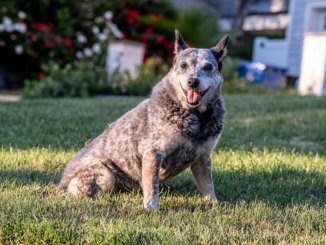

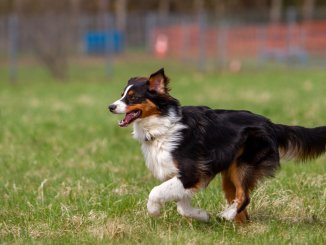
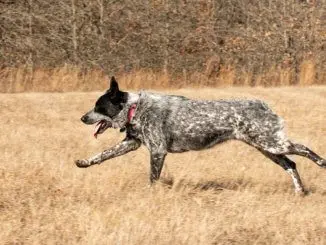
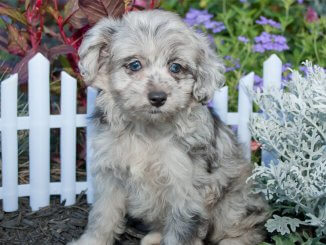

Be the first to comment